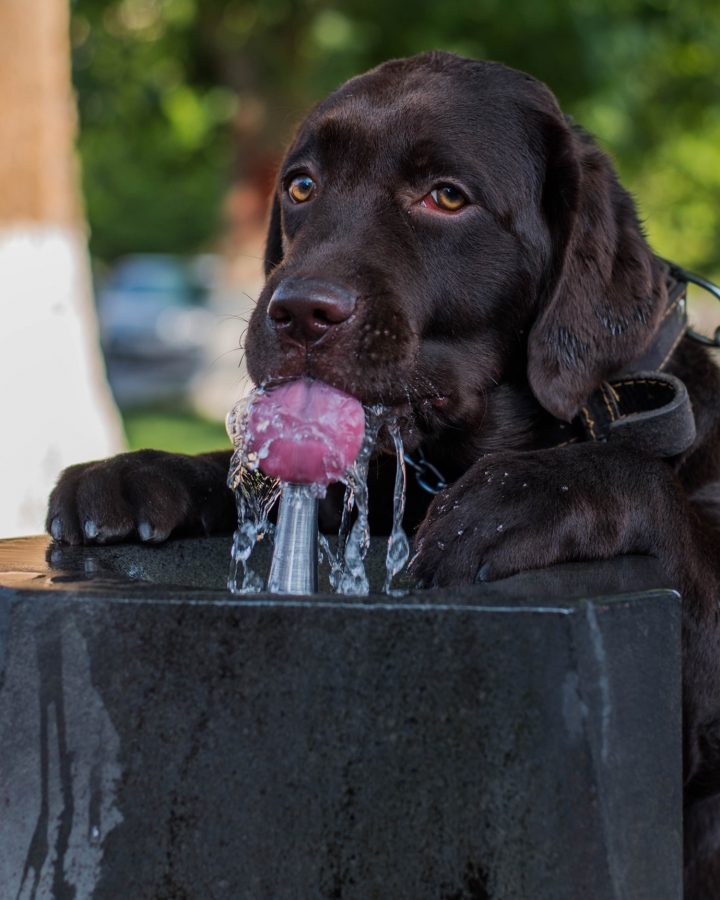The amount of water a dog should drink daily depends on many factors, including age, physiological status (e.g., pregnancy), level of physical activity, type and amount of food, and environmental conditions.
How much water should a dog take per day?
In general, the average daily water requirement in dogs is 50-60 ml per kg of body weight. This means, in other words, that a 10kg adult dog needs at least 500-600ml of water per day to balance fluid losses.
It is very important to make sure your dog receives the right amount of water throughout the day, as failure to meet their water needs can lead to dehydration, weakness, and increased body temperature.

My dog drinks little: is this normal?
Yes, it can be a normal occurrence. Let’s see why.
During the day, dogs not only drink the water offered to them in the bowl, but they also ingest it through food. The amount of liquids they get directly from food, however, depends on the type of food. Dry dog food generally contains 8 to 10% moisture, compared to 75% or more contained in canned food.
With a can of about 212 grams per day, a dog receives about 636ml of water, and this amount, together with the fluids deriving from normal metabolism, might satisfy their minimum daily water requirements. Therefore, a dog that does not drink, but eats mostly cans, could be absolutely normal.
From the same amount of dry food, however, a dog would receive only 21ml of water, which is insufficient to meet their minimum daily needs. For this reason, it is conventionally believed that a dog fed only dry food has three times the water requirement compared to a dog fed a canned food diet.
A dog’s water requirement increases with physical exercise and in hot weather
This is because the losses of liquids, for example, through evaporation and respiration, are greater. Consequently, a particularly sedentary dog drinks little, especially if the environmental temperature is not very high.
The dog that does not drink: the correct management of the water resource
There are various reasons why a dog might not drink water.
Sometimes, water refusal may depend on an inappropriate management of the resource by the owner. For example, a dog may drink little simply because it is not provided with the right amount of fresh, clean water. The water in the bowl must be changed at least once a day and must be easily accessible to the animal. In summer, when temperatures are high, water needs to be changed more frequently, even every two hours.
Some dogs may not like the type of bowl they are provided. There are, in fact, bowls of various materials on the market, from ceramic to stainless steel. A metal bowl keeps the water cooler. It is, thus, very important to check if your dog has a particular preference for one of these and, if so, comply with it.
When can this be a problem?
Dog may not drink enough because of a behaviour problem.
For example, they may have developed an aversion to water following associations with fearful stimuli while they were drinking, such as a loud and sudden noise or aggression by another animal. In situations where several animals coexist, in fact, social problems or competition over resources can inhibit one individual from approaching the water bowl. In these cases, it may certainly be useful to provide more bowls, located in different areas of the house.
What if my dog doesn’t drink or eat?
Failure to take water may be due to an altered feeling of thirst. This condition is defined as adipsia and can be caused by a congenital disease – common in the miniature Schnauzer breed – or by brain injuries secondary to trauma, inflammation or malformations. Typically, an animal with adipsia exhibits multiple symptoms. For example, a dog with adipsia does not eat or drink, they are lethargic, weak, disoriented, and may have convulsions.
If a dog does not eat or drink, they can become dehydrated after 24 hours. For this reason, it is very important to encourage a dog that is not well, and therefore does not drink or eat, to take fluids. In such circumstances, after consulting with your vet, it could be useful to add specific appetising substances to the water, which will encourage the animal to drink.
Federica Pirrone, Mariangela Albertini, Patrizia Piotti researchers at UNIMI Veterinaria
